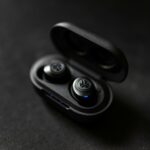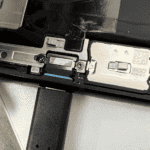Rain delays on sprinkler systems can be frustrating when you need to water your lawn. The B-hyve smart sprinkler timer offers a convenient rain delay feature. But sometimes you may want to turn it off.
To turn off rain delay on B-hyve, press and hold the “Rain Delay” button for about 5 seconds until “SENS” appears on the LED display. This disables the rain sensor on your B-hyve timer. You can also disable automatic rain delays through the B-hyve mobile app by turning off the “Weather Delays” setting for your device.
Smart watering features like rain delays help conserve water. But you may need to override them at times. Knowing how to control your B-hyve timer gives you more flexibility in managing your lawn irrigation schedule.
| B-hyve Rain Delay Methods | Steps to Disable |
|---|---|
| Hardware Button | Hold “Rain Delay” for 5 seconds |
| Mobile App | Turn off “Weather Delays” setting |
Understanding the B-hyve Timer
The B-hyve timer is a smart device that helps manage your watering schedule. It offers several features to make irrigation control easier and more efficient.
Key Features
The B-hyve timer comes with WiFi connectivity. This allows you to control your sprinkler system from anywhere using your smartphone. You can adjust watering times and schedules remotely.
The timer includes a rain delay feature. This automatically pauses watering when it rains to conserve water. You can also set manual rain delays as needed.
An LCD screen displays important information. It shows the current time, active programs, and scheduled watering times. This makes it easy to check your settings at a glance.
The B-hyve timer supports multiple watering zones. You can create custom schedules for different areas of your yard based on plant needs and sun exposure.
| Feature | Benefit |
|---|---|
| WiFi connectivity | Remote control |
| Rain delay | Water conservation |
| LCD display | Easy monitoring |
| Multi-zone support | Customized watering |
Installing Your Timer
To install your B-hyve timer, start by choosing a suitable location. Pick a spot near an electrical outlet and your existing sprinkler valves. Make sure it’s protected from direct sunlight and rain.
Mount the timer securely to the wall using the included hardware. Connect the wires from your sprinkler valves to the corresponding terminals on the timer.
Plug in the power adapter and connect it to the timer. Once powered on, the LCD screen will light up.
To set up WiFi, download the B-hyve app on your smartphone. Follow the in-app instructions to connect your timer to your home network.
Timer Controls and Programming
The B-hyve timer features a dial for easy programming. Turn the dial to select different modes and settings. Press the dial to confirm your choices.
To set a watering schedule, turn the dial to the “Program” position. Use the dial to select start times, watering days, and run times for each zone.
The “Auto” mode runs your programmed schedules automatically. “Manual” mode lets you start watering immediately for a set duration.
You can also program your timer using the B-hyve app. This offers more advanced features like weather-based adjustments and detailed reports on water usage.
Remember to review and adjust your settings regularly. This ensures optimal watering based on seasonal changes and plant needs.
Managing Rain Delays
Rain delays are an essential feature of the B-hyve irrigation system. They help conserve water and prevent overwatering during wet periods. Let’s explore how to set up, cancel, and manually operate your system during rain delays.
Setting Up a Rain Delay
The B-hyve app offers a simple way to set up rain delays. Open the app and select your device. Look for the rain delay option in the main menu. Tap it to access the settings. Choose the duration for your delay from the available options. These typically range from 24 hours to 7 days.
You can also set up a rain delay using the physical timer. Press and hold the “Rain Delay” button for about 5 seconds. The LED display will show “SENS.” Use the dial to adjust the delay duration. Press the dial to confirm your selection.
The B-hyve system can automatically trigger rain delays based on local weather data. To enable this feature, go to the app settings and turn on “Weather Delays.”
Cancelling a Rain Delay
To cancel a rain delay through the app, navigate to the device settings. Find the active rain delay and select “Cancel.” This will immediately resume your normal watering schedule.
For cancelling via the physical timer, press and hold the dial for 3 seconds. This action removes the active rain delay. Your system will return to its programmed schedule.
Remember that cancelling a rain delay overrides the smart watering feature. Only do this if you’re certain your lawn needs water despite recent rainfall.
Manual Watering Cycle
During a rain delay, you might need to water specific areas. The manual watering cycle allows you to do this without cancelling the entire delay.
In the B-hyve app, select your device and tap “Manual.” Choose the zone you want to water and set the duration. This won’t affect your ongoing rain delay or regular schedule.
On the physical timer, turn the dial to “Manual.” Select the zone and duration. Press the dial to start watering. The system will automatically stop after the set time.
| Feature | App Method | Physical Timer Method |
|---|---|---|
| Set Delay | Tap rain delay option, choose duration | Hold “Rain Delay” button, adjust with dial |
| Cancel Delay | Select “Cancel” in device settings | Hold dial for 3 seconds |
| Manual Watering | Tap “Manual,” select zone and duration | Turn dial to “Manual,” set zone and time |
Use manual watering sparingly during rain delays to maintain water conservation benefits.
Troubleshooting and Maintenance
Keeping your B-hyve system running smoothly requires addressing common issues and performing regular upkeep. Here’s how to tackle connectivity problems, calibrate sensors, and optimize timer performance.
Wi-Fi Connectivity Issues
Wi-Fi connection problems can disrupt your B-hyve’s functionality. Check your router’s signal strength near the device. Move the router closer if needed.
Restart your B-hyve device and router. This often resolves temporary glitches.
Verify your Wi-Fi password is correct in the B-hyve app. Incorrect credentials prevent connection.
Update your B-hyve app and device firmware. Outdated software can cause connectivity issues.
If problems persist, try resetting your B-hyve to factory settings. Consult the user manual for the reset process.
Weather Sensor Calibration
Proper sensor calibration ensures accurate weather-based watering. Check sensor placement. It should be in an open area away from obstructions.
Clean the sensor regularly. Remove debris that might affect readings.
Compare sensor data with local weather reports. Large discrepancies may indicate calibration issues.
| Sensor Issue | Possible Solution |
|---|---|
| False rain detection | Clean rain sensor |
| Inaccurate temperature | Relocate sensor to shaded area |
| Humidity errors | Check for nearby water sources |
Adjust sensitivity settings in the B-hyve app if needed. This can help fine-tune sensor responsiveness.
Timer Performance Optimization
To maximize timer efficiency, review your watering schedule regularly. Adjust for seasonal changes in rainfall patterns.
Use the water budgeting feature to automatically adjust run times based on weather conditions.
Check for leaks or damaged sprinkler heads. These can affect water pressure and timer performance.
Set up zones correctly in the B-hyve app. This ensures proper watering for different plant types and sun exposures.
Monitor your water usage reports. Unusual spikes may indicate timer malfunctions or leaks.
Consider enabling smart watering features. These use local weather data to optimize your watering schedule.
Frequently Asked Questions
B-hyve sprinkler systems offer rain delay features that can be adjusted or disabled. Users often have questions about managing these settings efficiently.
How can I disable the automatic rain delay feature on my B-hyve sprinkler system?
To disable automatic rain delays on your B-hyve system, open the B-hyve app. Go to the “My B-Hyve” tab and select “Devices”. Choose your device and find the “Weather Delays” option. Toggle this setting off to disable automatic rain delays.
What steps are involved in turning off the rain sensor functionality in the B-hyve irrigation system?
Turning off rain sensor functionality involves accessing your B-hyve controller settings. Navigate to the device settings in the app. Look for “Rain Sensor” or “Weather Adjustments”. Disable this feature to stop the system from responding to rain sensor input.
How can I manually override a rain delay that has been activated on my B-hyve device?
To override an active rain delay, open the B-hyve app. Locate the rain delay indicator on the home screen. Tap it to access delay settings. Select “Cancel Delay” or set the delay time to zero. This action will remove the current rain delay.
What are the instructions for disconnecting the rain sensor from my Orbit B-hyve system?
Disconnecting the rain sensor requires physical access to your B-hyve controller. Locate the rain sensor wires connected to your controller. Carefully remove these wires from the designated terminals. Update your controller settings to reflect the absence of a rain sensor.
Can I adjust the settings of my B-hyve system to ignore rain delays influenced by external weather services?
Yes, you can adjust these settings. Access the B-hyve app and go to device settings. Find “Weather Adjustments” or “Smart Watering”. Disable options related to external weather data to prevent automatic rain delays based on forecasts.
Why is the rain sensor on my B-hyve not functioning, and how can I rectify it?
A non-functioning rain sensor may have several causes. Check the physical connections between the sensor and controller. Ensure the sensor is clean and unobstructed. Verify that the rain sensor is enabled in your B-hyve app settings. If issues persist, consult the B-hyve support documentation or contact customer service.
| Rain Delay Feature | How to Adjust |
|---|---|
| Automatic Delay | Toggle in app settings |
| Manual Delay | Set on home screen |
| Rain Sensor | Physical disconnect or app setting |
| Weather Service | Adjust in Smart Watering settings |






